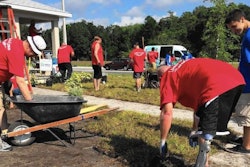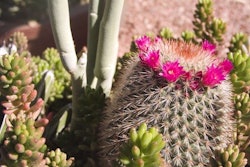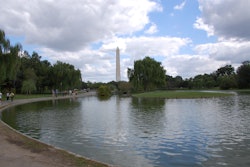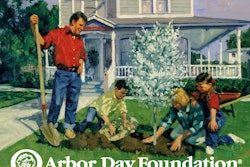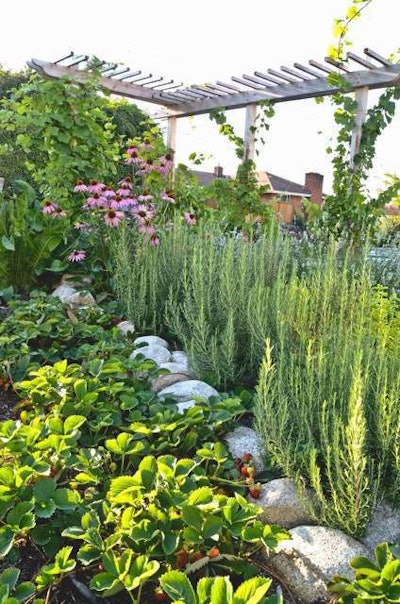 An edible landscape at a residence makes use of perennial edibles such as rosemary and strawberries.
An edible landscape at a residence makes use of perennial edibles such as rosemary and strawberries. Photo: Seattle Urban Farm Company
Incorporating edibles is a trend worth digging into
Call it gardening, edible landscaping, or urban agriculture, but the motive is the same: More people want to grow their own food. According to an American Society of Landscape Architects survey, a vegetable garden is one of the top ten design elements in residential landscaping.
Residential clients aren’t alone in their interest. Municipalities in places such as California and Florida require edibles to be part of job bids. Some cities, such Palm Springs, have offered rebates to encourage property owners to plant edibles. The booming foodie culture, “eat local” movements, and food safety concerns also drive interest.
Landscape companies have embraced the trend by offering design/build services for residential and commercial clients such as restaurants, city gardens, and corporations. Some companies offer a standard garden package; others customize it to the client. Profit margins range from 20 to 35 percent, and some companies boost cash flow by offering garden coaching services or weekly maintenance visits to tend crops.
Here’s how to decide whether edibles should be part of your services:
Assess your market
When Colin McCrate, co-owner of Seattle Urban Farm Company and author of Food Grown Right in Your Back Yard, founded his company in 2007, no one was installing edible gardens. “We discovered our niche. The timing was right because it was the perfect evolution of the local food movement and environmental ethics,” says McCrate. “Many of our clients want to use their land so they get something out of it.”
Families are a huge market segment. “We have a lot of families with kids,” says Dina Kountoupes, owner and founder of Harvest Moon Edible Landscapes in St. Paul, Minnesota. “People tell us, ‘My grandma had a garden when I was growing up but I don’t know how to do it, and I want one for my kids.’” Restaurant gardens are another potential client base. Some cities and corporations, such as healthcare companies, also add edible gardens to break areas.
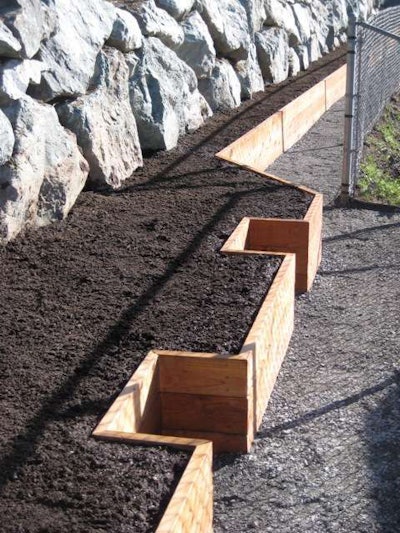 Raised cedar beds for edibles can be customized to any size and shape to take advantage of an otherwise unusable space.
Raised cedar beds for edibles can be customized to any size and shape to take advantage of an otherwise unusable space. Photo: Seattle Urban Farm Company
Plan the space
Location is the most important consideration. Veggies typically prefer full sun so avoid areas shaded by trees or structures. It’s also important to keep out critters. “We have a huge deer population, so we build enclosures six- to eight-feet high to exclude them,” says Josh Abramson, sales/account manager with Jacobsen Landscape Design and Construction in Midland Park, New Jersey. “We bury fencing underground to about 18 inches to keep woodchucks from burrowing in.”
Many experts recommend beds be no wider than four feet so people can reach across without having to stand in beds and compact the soil, says Abramson. Irrigation must be planned, too. Water with an overhead sprinkler on a digital timer, or convert or add a zone in an existing irrigation system. Drip irrigation is preferred, as it’s most efficient and permitted even where water restrictions are in place.
Manage the soil
Build mounded or raised beds. Most designers border them with cedar or other natural materials. “We’ve learned it’s usually necessary to bring in an entirely new batch of soil,” says McCrate. “Native soil is not rich enough in nutrients and may not have great structure.” Soil testing should be done if there’s concern about contaminants, such as locating a bed near an older house that may have lead paint.
To maintain yields, ensure the pH is between 6.3 to 6.9 for most veggies. Typically, supplemental fertilizer is needed throughout the season. While some people interplant with ornamentals, dedicated beds are better. “The perennials outcompete the annuals, and you need to manage the soil differently for annuals,” says McCrate. “I don’t like to compromise the vegetables’ needs. They do better in their own space.”
Choose the plants
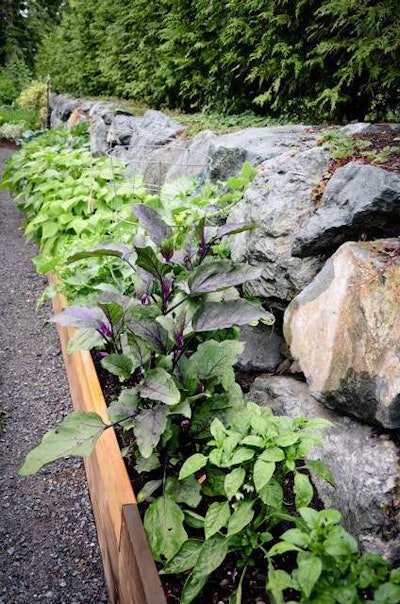 An edible bed bordered by cedar was tucked along an existing rock wall.
An edible bed bordered by cedar was tucked along an existing rock wall. Photo: Seattle Urban Farm Company
Research what grows well in your region, and include perennials such as strawberries. “Explain what thrives and talk about what people want to grow. If they choose something that’s not going to do well in your climate, such as habanero peppers, give them realistic expectations and explain that we can try but the plants may not fruit,” says McCrate.
Gather historical data such as what varieties did best for next year. Consider successional plantings so clients harvest beyond the summer months. Many design/build companies grow their own plants. “Nurseries have the culinary classics but not the selection we need,” says Dave Scandurra, founder and co-owner of Edible Landscapes in West Barnstable, Massachusetts. “The quality also suffers because the plants are shipped in, rather than grown locally.”
Collaborate with other companies
Consider partnering with another company to expand your client base. Kountoupes’ company works with Field Outdoor Spaces, an urban landscaping firm, to integrate edibles and fruit trees in designs. Or work with universities or someone versed in organic gardening, urban agriculture or permaculture. “There’s a huge learning curve in growing vegetables,” says Scandurra. “You need help if you don’t have experience.”
Spread the word
Participate in home shows and farmers’ markets. Give talks at local nurseries, trade shows, and eco-fairs. Tell other landscapers what you offer. Educate the public where you live about why edibles are an alternative in the landscape. “When people have never grown food before, they get excited,” says McCrate. “Even when every crop doesn’t do well, they learn a lot and gain an appreciation for where our food comes from.”

